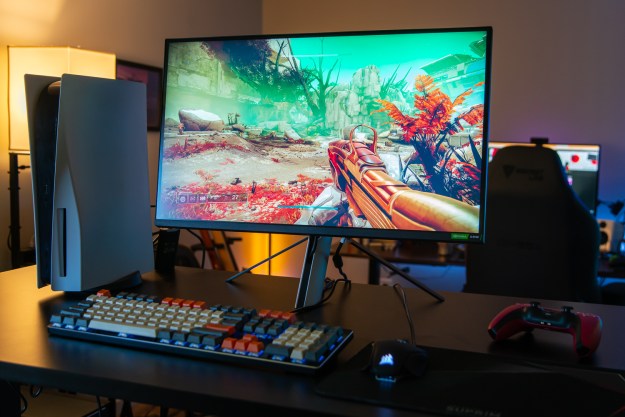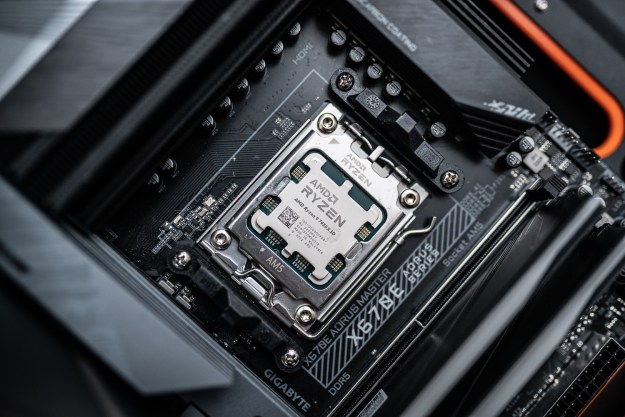“The 1151NR is just $199.99 with subscription, but we don't think it's worth locking yourself up for two years with this netbook...”
- Built-in dual EV-DO Rev A.; small and light; bright LCD screen; large keyboard keys
- Short battery life; vertical mouse buttons; only two USB jacks; short LCD screen; no 802.11n
Summary
Mobile computing is tough for international travelers. You may have a mobile wireless card from a U.S. phone carrier, but if it’s a CDMA card you won’t be able to use it in Europe, and if it’s a GSM card, you won’t be able to use it in much of Asia. The HP 1151NR netbook, the first of its breed to be offered at a subsidized price from a cell phone carrier, solves this global Internet access problem thanks to its built-in dual EV-DO Rev. A and HSPA radios for truly worldwide Web access. And the 1151NR is just $199.99 after rebate and two-year mobile data subscription. But the news isn’t all good. That monthly subscription drives the actual cost of 1151NR way up, plus you’ll be stuck with an otherwise sub-par netbook for 24 months minimum.

On the surface, what you get for $200 is rather impressive: A netbook similar to HP’s 1000 ($549) that runs the full version of Windows XP Home; a bright 10.1-inch LCD screen; a near full-size chicklet keyboard with spongy responsive keys larger than those found on many desktop keyboards; an 80 GB hard drive; and pre-installed Microsoft Works, Outlook Express, Windows Explorer, Migo Mobile Desktop 4 for PC synchronization, Norton Security 2009 and Pandora software. (The specs say Windows Media Player 11 is included, but we couldn’t find it.)
At 6.6 inches deep, the 1151NR also is about an inch less deep than most other netbooks, and at 2.45 pounds, around a third of a pound lighter. Built into the grilled hinge are the stereo speakers, which pump out a surprising amount of volume.
And, of course, you get the dual 3G CDMA/GSM radios for global data. There’s also Wi-Fi – b and g, but not n, mind you.
Best of all, you get the built-in Verizon VZ Access Manager, which lists all available Wi-Fi networks along with your Verizon mobile data number WAN network, all in one window.

Second, the 1151NR’s screen is 1024×576 pixels instead of 600. You’ll miss those extra 24 vertical pixels too: The bottom of many long pop-up windows, such as ESPN’s GameCast windows and some program configuration windows, are buried beneath the Windows menu bar, which means you often lose options such as Save or Cancel and the Window re-size corner.
Ports & Connectors
Also falling a couple of trees short of a forest is the 1151NR’s jack pack. It’s not missing any necessary jacks, but you get 2 USB jacks instead of the usual netbook three, and you need to buy a separate $30 adapter to use the proprietary VGA jack.

The 1151NR’s biggest attraction is the dual EV-DO and WiFi (b/g) radios. Using the Yahoo Bandwidth Meter widget, we measured a speedy 680 kbps using Verizon’s EV-DO Rev. A service in Manhattan, not that much slower than the 762 kbps we were getting via WiFi. (Understandably slow since the 1151NR couldn’t connect to our faster 802.11n LAN).
It took Windows XP Home a hair longer than a minute to boot up, almost twice as long as other netbooks. But while not exactly zippy, the 1151NR isn’t noticeably slower booting software and opening files compared to supposedly faster laptops.
Aside from the missing 24 vertical pixels, the screen on the 1151NR is super bright when cranked up to maximum, able to display vivid colors, but suffers from a limited viewing angle – you’ll have to adjust the screen on its hinge just right for maximum visibility.
If you’re a video communicator, you’ll be disappointed in the built-in .3 MP (VGA) webcam as well. We had to boost the brightness and contrast to nearly maximum levels to get a barely visible image in a brightly-lit room.

Thanks to its three-cell battery – most netbooks are equipped with six-cell power cells – battery life is an extreme disappointment. Using WiFi, we squeezed out two hours of surfing, 15 minutes less surfing via EV-DO.
With all the radios off, we got around 2.5 hours of continuous power, well shy of the usual 5-8 hours you’d expect from a netbook and less even than some full-size laptops.
Worse, it takes longer to recharge the batteries than it takes to drain them, around three hours.
*Editors Note (5/21/09): Some of these power issues will be ameliorated if/when Verizon makes its expected 6-cell accessory/replacement battery available.
Conclusion
What kind of value is the 1151NR? You can buy it sans mobile data subscription for $519, more expensive than many netbooks with better specs and higher performance. And netbook amenities are bound to improve in the next two years, especially memory, while you’re stuck with the already compromised 1151NR. To add insult to possible injury, the 1151NR only comes with a one-year warranty. But the 1151NR’s dual CDMA/GMS radio makes it incomparable to any netbook on the market right now for frequent international travelers who need unfettered Internet access.
Pros:
- Built-in EV-DO Rev. A, HSPA and WiFi b/g connectivity
- Small and light
- Bright 10.1-inch LCD screen
- Large, spongy keyboard keys
- Pre-installed Microsoft Works
Cons:
- Short battery life
- Vertical mouse buttons
- Requires two-year mobile data subscription plan
- Only two USB jacks
- Short LCD screen
- No 802.11n
Editors' Recommendations
- Is Apple’s Mac Mini M2 any good? Here’s what reviews say
- HP Omen 16 (2022) hands-on review: Cool and colorful
- HP Spectre x360 15 (2020) hands-on review: Less bezel, more power


